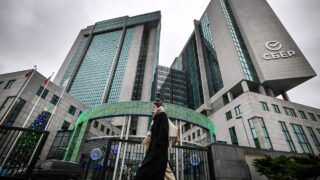Putin’s Crypto Scheme to Beat Sanctions Is Failing!
Video Summary
China’s currency, the Yuan, is a good example. Chinese companies don’t want Russian rubles and prefer to be paid in Yuan. This requires an exchange of currencies, which is a risk for many banks. But if you’re a major player, you need to make these transactions work. Russia is even resorting to bartering, offering copper wire, fertilizer, and natural gas to secure supplies, but this approach has its limitations.
To address this, Russia is turning to its National Payment Card System to enable Ruble-denominated international transactions based on cryptocurrencies. The Central Bank of Russia is authorizing a pivot to a crypto-based system, which is a drastic shift from their earlier plans to ban cryptocurrency due to concerns about illicit activities and tax evasion. The decision is driven by the urgent need to enable Russian companies to make overseas transactions and receive payments for exports, particularly since the US expanded its criteria for targeting foreign banks that work with Russia in June.
The trial is focusing on stablecoins, which are cryptocurrencies pegged to popular fiat currencies like the US dollar or Chinese Yuan. This makes sense, as unstable cryptocurrencies like Bitcoin are prone to huge price fluctuations. Imagine signing a contract and having to pay a fixed amount only to see the value of the currency fluctuate wildly. Stablecoins aim to mitigate this risk.
However, there’s a problem with stablecoins. They’re essentially backed by fiat currencies, but since they’re not backed by an actual dollar or other reserve currency, they can still experience significant fluctuations in value. This is what happened to USDC (US Dollar Coin) which was meant to be pegged to the US dollar but experienced a 40% swing in value over six months.
Russia’s industrial economy needs a payment system that can sustain massive transactions, but stablecoins are not up to the task. A single trade with China is worth $7 billion, and Russia needs a system that can handle these enormous transactions. With such a limited market, stablecoins are unlikely to be able to sustain demand. The dominance of the US dollar in international trade is due to its stability, making it the most popular reserve currency. Gold is another option, but it’s still not perfect.
In conclusion, while the idea of using crypto for international transactions is promising, it’s not quite ready for primetime. Russia and other massive economies need a more secure and stable payment system, and crypto simply isn’t up to the task.
























